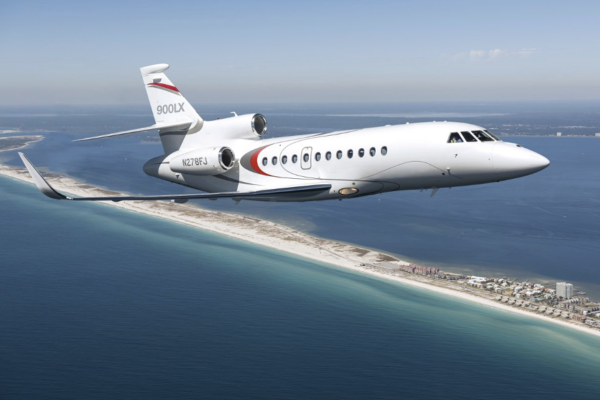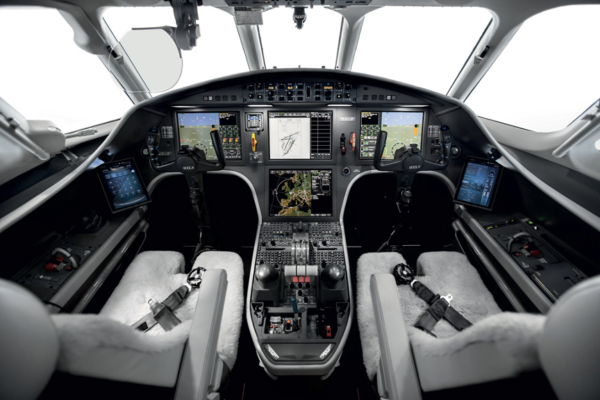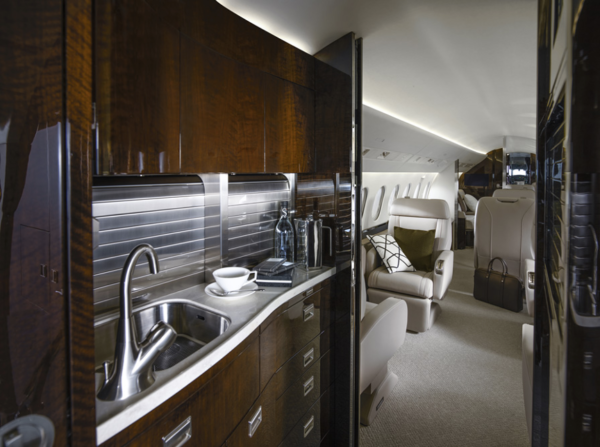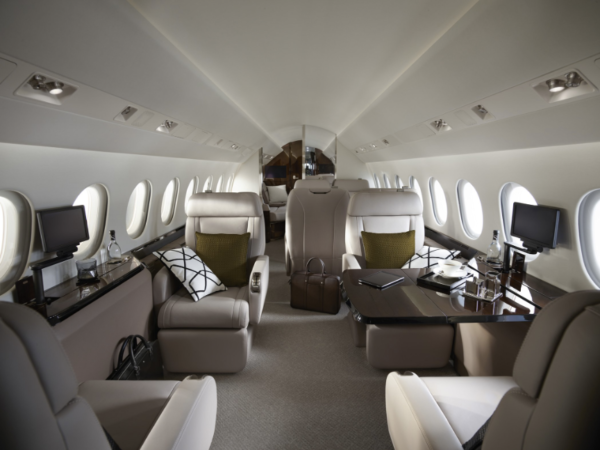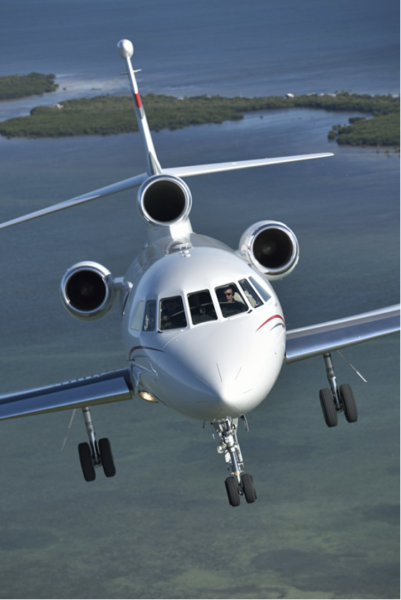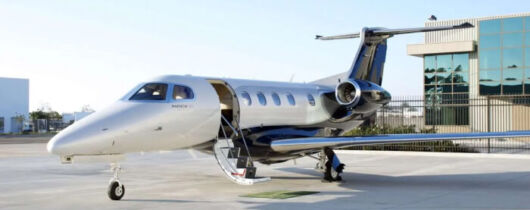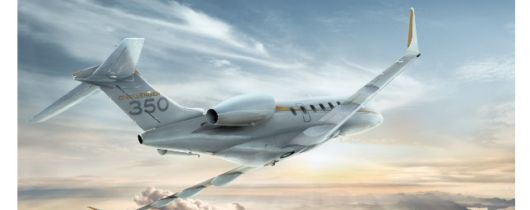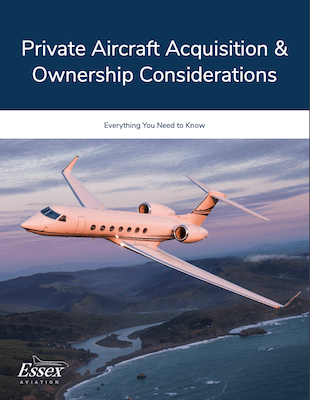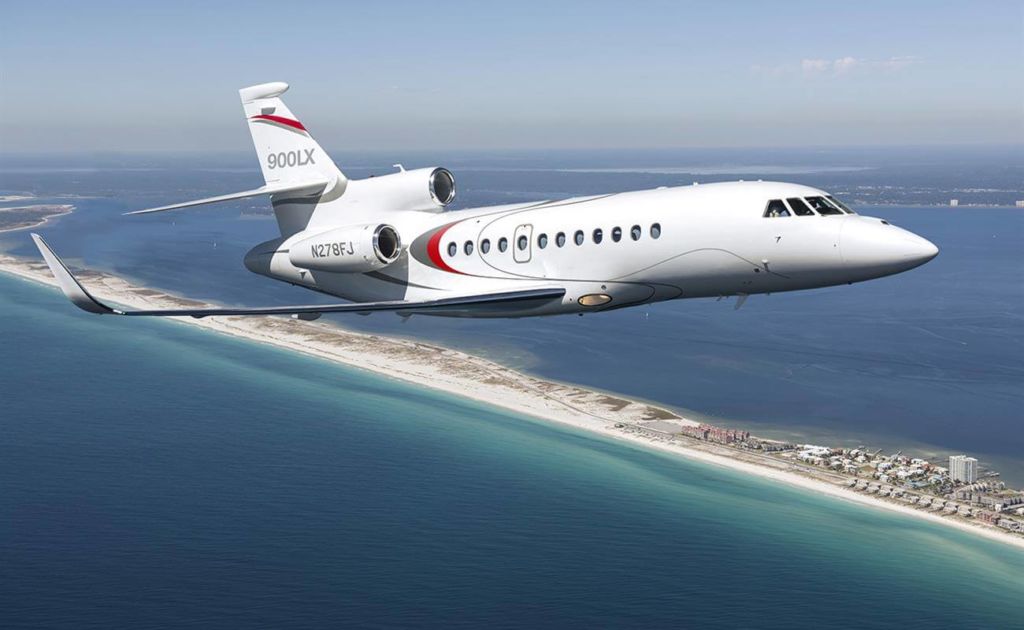
When it was first launched in 2008, Dassault announced that the Falcon 900LX offered significant improvements to its already-popular Falcon 900 long-range heavy jet lineup, including:
- 7% additional range,
- A 10% increase in climb performance, and
- 35%–40% greater efficiency compared to other aircraft in its class.
In addition to performance enhancements, the Falcon 900LX offered cabin enhancements, an updated avionics suite and a new winglet design.
In 2016, Dassault unveiled a modernized version of the Falcon 900LX, with an updated cabin design and avionics suite enhancements, which include the FalconEye Combined Vision System and the Falcon Sphere II, an advanced Electronic Flight Bag (EFB) solution.
In this aircraft review, we’ll cover primary aspects of the Falcon 900LX, including technical specifications, design options, technology, investment costs and more.
The Falcon 900LX at a Glance
Photo Credit: Dassault Falcon
| Dassault Falcon 900LX Technical Specs | |
| Maximum Range | 4,750 nm / 8,800 km |
| Top Speed | .87 Mach / 580.06 KTAs / 1074.28 km/h |
| Typical Cruise Speed | .84 Mach / 560.06 KTAs / 1037.23 km/h |
| Maximum Altitude | 51,000 ft / 15,545 m |
| Cabin Dimensions | |
| Length | 33 ft 2 in / 10.11 m |
| Height | 6 ft 2 in / 1.88 m |
| Exterior Dimensions | |
| Length | 66 ft 4 in / 20.21 m |
| Wingspan | 70 ft 2 / 21.38 m |
| Height | 24 ft 9 in / 7.55 m |
| Passengers | 12 passengers |
Cockpit Design
Photo Credit: Dassault Falcon
As is the case with most later model Dassault Falcons, the Falcon 900LX utilizes the EASy II flight deck, which Dassault developed in partnership with Honeywell and is modeled after Honeywell’s Digital Engine Operating System. Dassault also incorporated FalconEye HUD (Head Up Display) in its 2016 900LX redesign. This Combined Vision System uses synthetic, database-driven terrain mapping and actual thermal and low-light camera imaging to provide pilots with enhanced visual situational awareness in all weather and lighting conditions for greater operational safety and flexibility.
From an operating design standpoint, the Falcon 900LX’s cockpit is standard, equipped with control yokes, large multi-function display units and shearling-lined seats.
Cabin Design
The Falcon 900LX’s standard floor plan configuration — which we’ll refer to in this review — is designed to accommodate 12 passengers spread out among three cabin zones: the forward cabin, the mid cabin and the aft cabin. However, its Type III emergency exit design allows for a higher density floor plan that can accommodate up to 19 passengers, if so desired.
Passengers boarding the aircraft will pass through the main entryway and galley which includes a 25-inch closet with curtain close-out and 36-inch galley-bar cabinet before entering into the forward cabin. Additional galley features include an automatic cappuccino/espresso machine, storage drawers, two ice chests, a trash compartment and sink.
Photo Credit: Dassault Falcon
The forward cabin features four 20-inch wide seats arranged in a club configuration. Each seat includes floor tracking, back tracking, side tracking, swivel, full flat recline, integral headrests, retractable armrests and electronically controlled lumbar. Each pair of seats includes a folding, stowable 28 inch by 24 inch console table.
Photo Credit: Dassault Falcon
To the left-hand side of the mid cabin, passengers will find two pairs of seats stationed on opposite sides of a 46 in x 28 in folding, stowable electronic hi-lo dining table. To the right-hand side of the cabin are multipurpose storage cabinets.
Photo Credit: Dassault Falcon
Finally, within the standard floor plan, the left-hand side of the aft cabin offers a three-person convertible divan for berthing, providing passengers with sleeping accommodations on longer flights. To the right-hand side are two executive-style seats, arranged around a 28 inch by 18 inch folding stowable console table.
Photo Credit: Dassault Falcon
A nicely appointed lavatory — equipped with an electric flushing toilet, vanity and additional cabin storage — and 127 ft3 (3.6 m3) of baggage compartment space can be found toward the rear of the aircraft.
Photo Credit: Dassault Falcon
While this describes a standard layout, prospective Falcon 900LX buyers can customize everything from finishes to their desired cabin configuration by utilizing the services of Dassault’s in-house design studios and showrooms, located in Teterboro, New Jersey and Le Bourget, France.
Technology
The 900LX offers onboard connectivity and high-speed internet access using the Dassault FalconConnect. According to Dassault, FalconConnect “is extremely flexible and can be used to access networks including 3G/4G on ground, Wi-Fi, Inmarsat L-Band, Datalink, Iridium Classic and Next, Viasat Ku and Ka-Bands or Jet ConneX Ka-Band, and is expandable to future developments.” As with any aircraft, the particular vintage of the Falcon 900LX may influence whether existing equipment meets an owner’s requirements, or if it’s necessary to incorporate specific technology and equipment.
The Falcon 900LX is also equipped with FalconCabin HD+, Dassault’s cabin management system. Using FalconCabin HD+, passengers can control everything from lighting and temperature to the aircraft’s built-in entertainment system from either one of the iPad armrests (shown in the image below) or the personal device of their choosing.
Photo Credit: Dassault Falcon
Exterior Design
Constructed from metal alloys and composite materials and featuring a three (3) engine design, the Falcon 900LX has a noticeable presence. The most noteworthy different between the Falcon 900LX and its predecessors are its winglets. In addition to being aesthetically pleasing, the winglet design utilizes technology to optimize climb efficiency and provide an increased range of approximately 200 nm. The 900LX’s winglets also incorporate “an exclusive LED anti-collision/navigation light system for greater reliability.”
The 900LX’s wing design leverages leading-edge slats and double-slotted Fowler flaps, which deploy on final approach and create impressive short-field performance capabilities. These capabilities enable the Falcon 900LX to access a greater number of airports.
Considering its performance, cabin size and comparable long-range capability, the Falcon 900LX — much like its 900EX and classic 900 predecessors — has exterior dimensions that can be easily accommodated by typical medium-size private hangars, which are popular and currently exist amongst most Fixed-Base Operators.
Finally, the 900LX features three Honeywell TFE731-60 engines, noted for decades of delivering performance and reliability.
Photo Credit: Dassault Falcon
Acquisition Cost
Naturally, the acquisition cost for a Falcon 900LX will vary greatly depending on whether the prospective buyer is considering a brand-new 900LX (with a variety of available options) or a pre-owned model, which in some cases could be over a decade old and have a very high utilization rate, amongst other typical factors that affect market value.
With that said, the purchase price for a new Falcon 900LX typically ranges from the lower to mid-$40 million range, while good pre-owned models may start at $20 million.
As is to be expected, the acquisition cost of a pre-owned model depends on its age and additional specifications, such as total hours, total landings, pending inspection events and ownership history. The 900LX is currently a popular model amongst prospective buyers, which contributes to very low pre-owned inventory and favorable market conditions for sellers.
Direct Operating Costs
Note: All direct operating costs listed are estimated; actual expenses will vary based on total annual flight hours.
|
Fuel |
Approximately $1,064 per hour |
|
Maintenance |
Approximately $973 per hour |
|
Engine Overhaul |
Approximately $1,061 per hour |
|
Miscellaneous |
Approximately $615 per hour |
|
Total Direct Costs |
Approximately $3,715 per hour |
Source: Conklin de Decker
Fixed Costs
Note: All fixed costs listed are estimated; actual expenses will vary based on crew experience and certifications, hangar location, insurance coverage, and so on.
|
Crew |
Approximately $404,300 (includes benefits / excludes flight attendants) |
|
Crew Training |
Approximately $90,000 per year |
|
Hangar |
Approximately $45,800 per year |
|
Insurance |
Approximately $69,020 per year |
|
Miscellaneous |
Approximately $27,134 per year (excludes modernization/ refurbishment reserve) |
|
Total Fixed Costs |
Approximately $636,254 per year |
Source: Conklin de Decker
Is a Falcon 900LX Right for You?
Thanks to its long-range capabilities and short airfield performance, the Falcon 900LX is an excellent option for travelers who need the ability to travel long distances with minimal fuel stop interruptions and need the operational performance to access a greater range of smaller airport options.
With that said, whether you’re interested in a 900LX or any other comparable long-range business jet, it’s important to carefully consider your unique travel requirements. As a general rule of thumb, it’s in your best interest to select an aircraft model that can efficiently accommodate at least 80% to 85% of your travel needs in the style and comfort you desire; alternative arrangements can be made for the remaining 15% to 20% of your travel.
How to Acquire a Falcon 900LX
Start your search for your next business jet — whether that’s the Dassault Falcon 900LX or otherwise — with the support of a team of qualified professionals. The consultants at Essex Aviation Group offer a combined 100+ years of experience in the private aviation industry, with countless satisfied, high-profile clients. No matter what your unique travel requirements, Essex Aviation will help you identify which utilization option or aircraft is right for you and offer unbiased, expert advice every step of the way.
Contact us today to discuss your private aviation needs.




